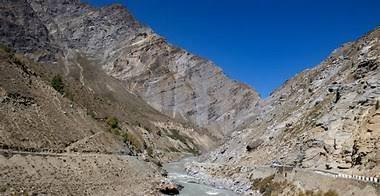 Image Source: MSN
Image Source: MSN
Key Highlights
River valleys are not just scenic wonders—they’re microclimates with unique, often surprising weather patterns shaped by geography, altitude, and water flow. Here’s a look at 13 river valleys around the world, each with its own local weather quirks that influence everything from biodiversity to daily life.
• Kaghan Valley, Pakistan
At 2,500 meters, Kaghan is famous for sudden temperature swings, frequent snowfall in winter, and cool, humid microclimates near waterfalls. Its lakes are fed by melting snow, creating a lush refuge for alpine species.
• Okanagan Valley, Canada
Known for autumn valley fog, where cold air and moisture from rivers create thick fog banks that linger until midday, impacting visibility and local agriculture.
• Rhine Valley, Germany
The steep valley walls trap warm air, making it one of Europe’s warmest wine regions, despite its northern latitude.
• Nile Valley, Egypt
The river moderates desert heat, creating a narrow strip of fertile, humid land surrounded by arid expanses.
• Mississippi River Valley, USA
Subject to intense thunderstorms and tornadoes in spring, with heavy fog in autumn due to temperature inversions.
• Danube Valley, Austria
Experiences sudden cold snaps and dense morning fog, especially where tributaries meet.
• Po Valley, Italy
Famous for persistent winter fog and high humidity, often leading to air pollution episodes.
• Mekong Valley, Southeast Asia
Marked by monsoonal rains and rapid flooding, with microclimates supporting diverse agriculture.
• Amazon River Valley, Brazil
High rainfall and humidity year-round, with frequent afternoon thunderstorms and a near-constant “wet season.”
• Indus Valley, Pakistan/India
Extreme temperature gradients: searing heat in summer, biting cold in winter, and sudden dust storms.
• Yangtze River Valley, China
Prone to heavy summer rains and flooding, with subtropical humidity and periodic typhoons.
• Thames Valley, UK
Variable weather with frequent fog, heavy rain, and occasional frost pockets due to cold air pooling.
• Colorado River Valley, USA
Sharp temperature drops at night and sudden flash floods after desert storms.
Why These Quirks Matter
Valleys amplify weather effects: cold air sinks, fog forms easily, and rainfall is often uneven due to mountain “rain shadows.”
Local weather shapes biodiversity, agriculture, and even human settlement patterns.
Climate change is intensifying these quirks, with increased storm intensity, altered flood cycles, and shifting fog patterns.
From persistent fog to flash floods, these river valleys remind us that geography is destiny when it comes to weather.
Sources: NASA Earth Observatory, Internet Geography
Advertisement
STORIES YOU MAY LIKE
 Image Source: India.com
Image Source: India.com
 Image Source: Hindustan
Image Source: Hindustan
Advertisement



